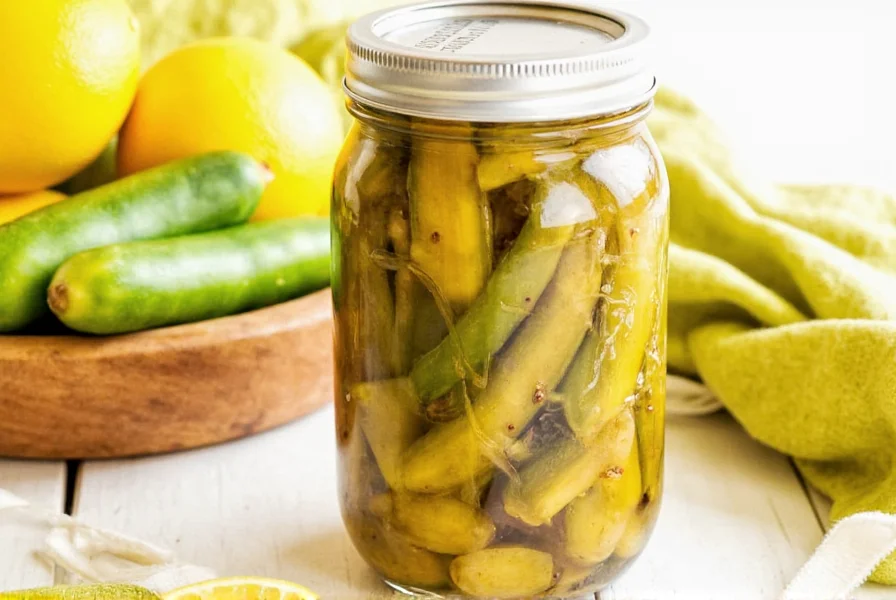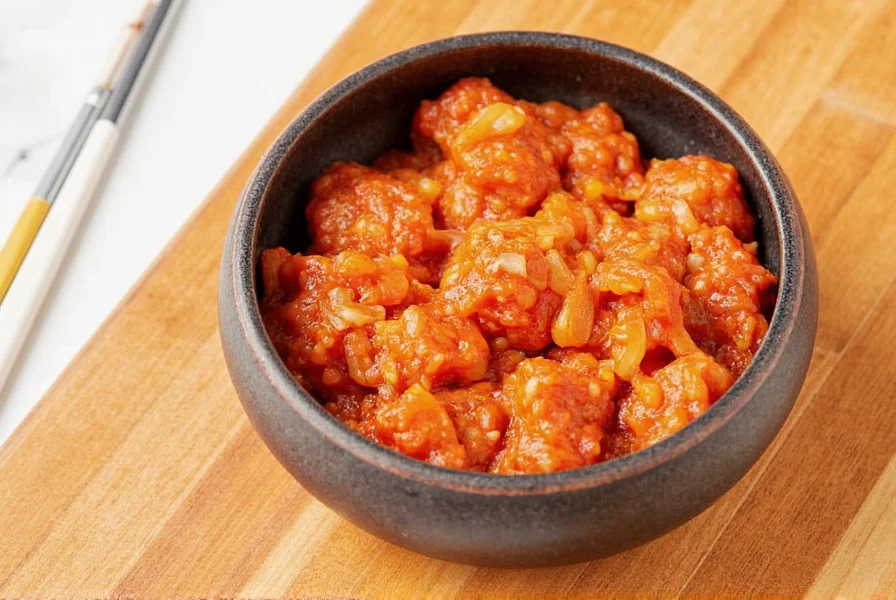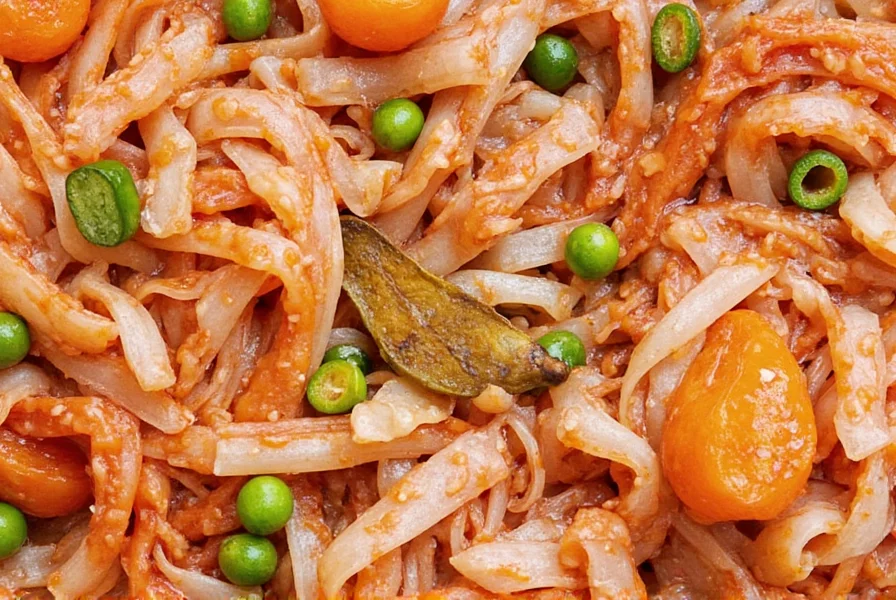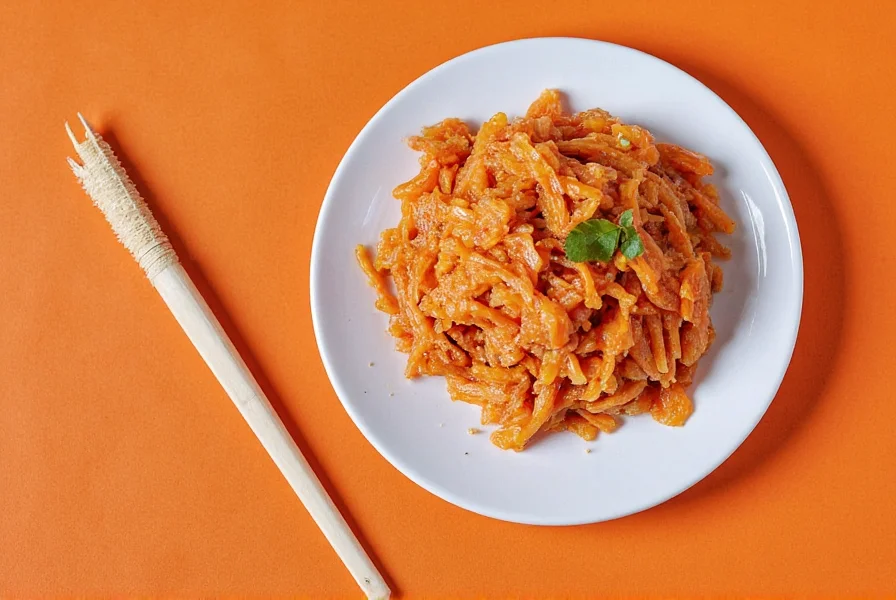Table of Contents
Make Delicious Kimchi in 6 Simple Steps
Ready to try authentic homemade kimchi? This easy kimchi recipe requires only basic ingredients and no special tools. Perfect for beginners, it delivers authentic flavor with minimal effort. Follow these clear steps to create probiotic-rich kimchi that’s ready in just days!

Essential Ingredients
Here’s what you’ll need for a perfect batch of kimchi:
- Napa Cabbage – 1 large head (firm and crisp)
- Gochujang – 3 tbsp (authentic Korean chili paste)
- Garlic – 4 cloves, minced
- Ginger – 1 tbsp, grated
- Fish Sauce – 1 tbsp (or soy sauce for vegan option)
- Radishes – 1 medium, julienned
- Carrots – 1 medium, julienned
- Sea Salt – 1/4 cup

Step-by-Step Recipe
Step 1: Prep the Cabbage
Cut napa cabbage into 2-inch pieces. Sprinkle with salt, massage gently, and let sit for 2 hours to draw out moisture.
Step 2: Rinse and Drain
Rinse cabbage thoroughly under cold water. Drain completely in a colander for 15 minutes.
Step 3: Make the Paste
In a bowl, mix gochujang, garlic, ginger, fish sauce, and 1 tsp sugar (optional). Add radishes and carrots to the paste.

Step 4: Coat the Cabbage
Add drained cabbage to the paste. Use gloves to massage the mixture until every piece is evenly coated.
Step 5: Ferment
Pack tightly into a clean glass jar. Press down to remove air pockets. Cover with lid and leave at room temperature for 1-3 days.

Step 6: Store and Enjoy
Refrigerate after fermentation. Kimchi improves with age and stays fresh for months!
Pro Tips for Perfect Kimchi
- Use fresh ingredients – Quality ingredients make all the difference
- Don’t skip salting – This step ensures crisp texture
- Control spice level – Adjust gochujang to your taste
- Use sterilized jars – Prevents mold during fermentation

Frequently Asked Questions
How long does homemade kimchi last?
Stored properly in the fridge, kimchi stays fresh for 3-6 months. Flavor develops and becomes tangier over time.
Can I make kimchi without fish sauce?
Yes! Substitute with soy sauce or 1 tsp miso paste for vegan kimchi. Seaweed broth also works well for umami flavor.
Why is my kimchi too salty?
Rinse cabbage thoroughly after salting. If already too salty, add fresh vegetables to balance the flavor.
How do I know when kimchi is fermented?
Fermented kimchi has bubbles, tangy aroma, and slight sourness. It should feel effervescent when eaten.
Can I use other cabbage types?
Napa cabbage is ideal, but green cabbage works too. Adjust salting time as needed for different varieties.
Common mistakes to avoid
Not salting enough (mushy texture), using dirty containers (mold risk), or skipping air removal (uneven fermentation).
| Item | Description | Features |
|---|---|---|
| Kimchi Jar | Sealed glass container for fermentation | Airtight, non-reactive, easy to clean |
| Gochujang | Korean chili paste | Authentic, sweet-spicy flavor base |
| Fish Sauce | Traditional umami enhancer | Boosts depth of flavor |
| Napa Cabbage | Primary vegetable base | Firm texture absorbs flavors well |

Start Your Kimchi Journey Today
This easy kimchi recipe proves authentic Korean flavors are within reach. With minimal effort and common ingredients, you’ll create probiotic-rich kimchi that elevates any meal. Share your creations and enjoy the delicious results!












 浙公网安备
33010002000092号
浙公网安备
33010002000092号 浙B2-20120091-4
浙B2-20120091-4